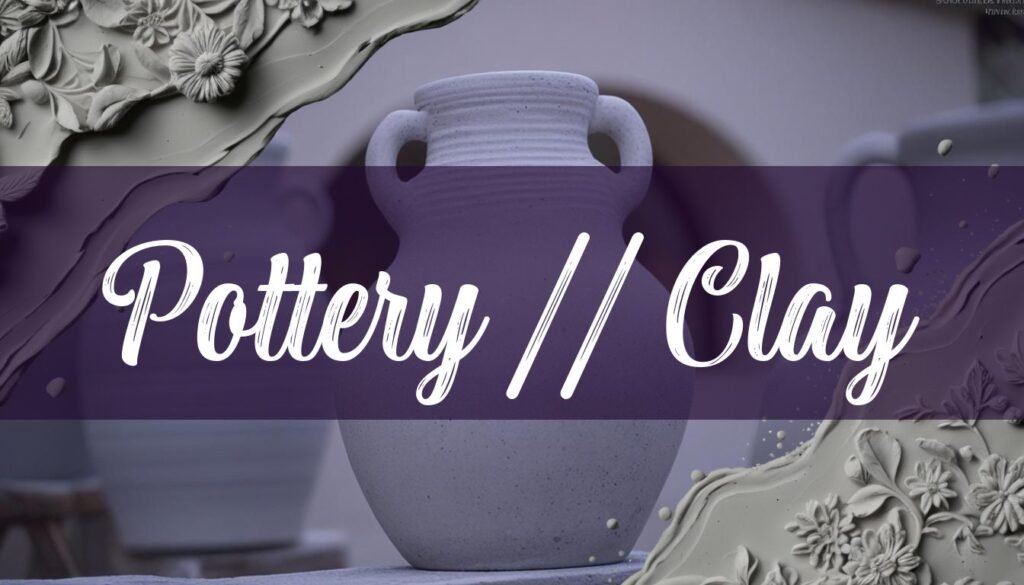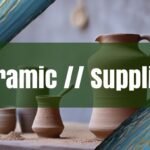Finding the perfect pottery clay is a crucial step for both beginners and experienced ceramic artists. The right clay can make all the difference in the success and enjoyment of your pottery projects. Whether you’re looking for a local supplier “near me” or exploring online options, understanding the types of clay available and how to evaluate their quality will help you make an informed decision.
Local Pottery Supply Sources
For those who prefer to examine clay in person, local options are invaluable. Pottery supply stores are a prime resource, offering a variety of clay types, from earthenware to stoneware and porcelain. These stores often have knowledgeable staff who can provide guidance on selecting the right clay for your specific needs. Being able to touch and feel the clay, assess its texture, and ask questions directly is a significant advantage. Art centers and ceramic studios may also sell clay, sometimes at competitive prices. These venues can be particularly helpful for beginners, as they often offer classes and workshops where you can learn about different clay types and their properties. Check out this guide to teaching pottery classes if you’re interested in starting a class yourself. However, local options may have limited selections compared to larger online retailers. The prices might also be higher due to the overhead costs of running a physical store. Despite these potential drawbacks, the ability to immediately access the clay and receive expert advice makes local sources a worthwhile consideration.
Online Retailers: Convenience and Variety
Online retailers provide a convenient alternative, especially for those who live in areas with limited access to local suppliers. These retailers typically offer a broader selection of clay types and brands, allowing you to explore options that might not be available locally. From earthenware, known for its vibrant colors and lower firing temperatures, to stoneware, valued for its durability and versatility, and porcelain, prized for its delicate appearance and translucence, the online marketplace caters to diverse pottery needs. The convenience of shopping from home and having clay delivered to your doorstep is undeniable. However, there are downsides to consider. Shipping costs can be significant, especially for heavy items like clay. You also lose the ability to physically assess the clay before purchase, which can be crucial for experienced potters who rely on tactile feedback. Reading reviews and checking product descriptions carefully becomes even more important when buying clay online.
Understanding Different Types of Pottery Clay
Choosing the right type of clay is essential for the success of any pottery project. Earthenware clay, often used by beginners due to its forgiving nature, fires at lower temperatures and is ideal for decorative pieces and terracotta. Stoneware clay, known for its durability, is perfect for functional items like dinnerware and vases. Porcelain clay, prized for its translucence and fine texture, is often used for high-end pottery and delicate sculptures. Other specialized clays include ball clay, often mixed with other clays to increase plasticity, and fire clay, which can withstand extremely high temperatures and is used in kilns. Air-dry clay is a convenient option for those without access to a kiln, hardening naturally in the air. Each type of clay has unique properties and firing requirements, so understanding these differences is crucial for achieving the desired results in your pottery.
Evaluating Clay Quality and Making Informed Decisions
When purchasing pottery clay, consider several factors to ensure you’re getting a quality product. Check the clay’s plasticity, which refers to its ability to be molded and shaped without cracking. Look for a smooth, consistent texture and avoid clay that feels gritty or contains large particles. Consider the firing temperature range of the clay and ensure it aligns with the capabilities of your kiln. Also, think about the intended use of your finished pieces. For functional ware like bowls and mugs, choose a durable clay with a low water absorption rate. For sculptural or decorative pieces, you may have more flexibility in your clay selection. Price is also a factor, but remember that higher-priced clay isn’t always better. Consider the quantity you need and whether buying in bulk can save you money. Also, consider what you want to make with the clay. There are many things to make in pottery class, with project ideas for all skill levels. Finally, factor in shipping costs when purchasing online and read reviews to gauge the experiences of other potters with specific clay types and suppliers. By carefully evaluating these factors, you can make an informed decision and choose the best pottery clay for your artistic endeavors.





